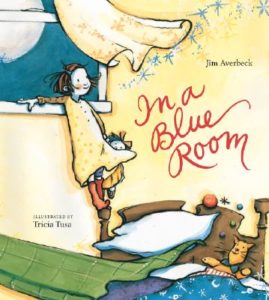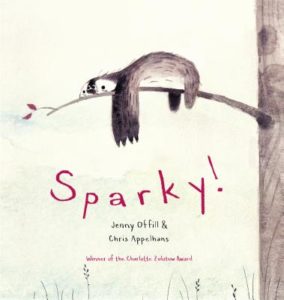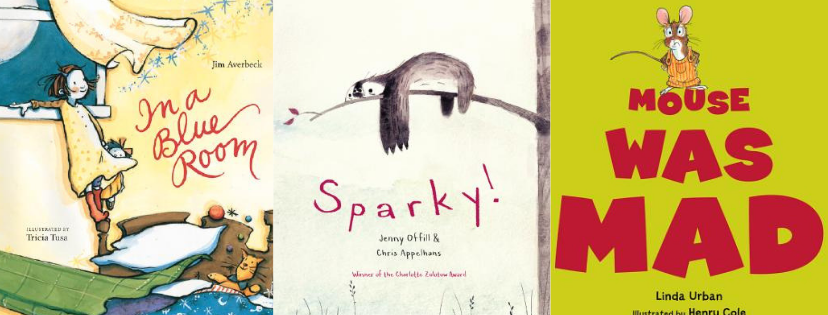craft review by Becky Levine
You hear this over and over again: your story hero needs to face obstacles, grow and learn, and then . . . dive into that dark cave for the sword, come out swinging, and change their world for the better.
Even in a picture book. Even when your hero is four, maybe five years old. Even when the problem you’ve given them certainly isn’t anything you could have controlled at their age.
This is the question that, more than any other, takes me back to my picture book “mentor texts.” I’m looking for that place in the story when the young hero steps up, takes action, does something or says something—anything—to solve their problem.
That moment can be really hard to find.
There are some wonderful picture books show the main character taking dramatic action (Bike on, Bear!, written by Cynthea Liu/illustrated by Kristyna Litten) or making a strong choice (Interstellar Cinderella, written by Deborah Underwood/illustrated by Meg Hunt). But, over time, I’ve realized that in in many other books, the heroes’ actions and choices are much quieter.
I pulled three of my favorite mentor texts of the shelf to talk about:
- In a Blue Room, written by Jim Averbeck/illustrated by Tricia Tusa
- Mouse was Mad, written by Linda Urban/illustrated by Henry Cole
- Sparky!, written by Jenny Offill & Chris Appelhans
 Each of these books has a hero that I love, and each hero has a problem. It’s bedtime for Alice of In a Blue Room, but she can only sleep in a blue room, and Mama keeps bringing in things that are other colors. In Mouse is Mad, well . . . Mouse is mad, and everything that happens just makes him madder. And in Sparky!¸ a young girl gets herself the only pet that will meet all her mother’s requirements—a sloth—and then has to deal with the fact that Sparky is extremely unpetlike.
Each of these books has a hero that I love, and each hero has a problem. It’s bedtime for Alice of In a Blue Room, but she can only sleep in a blue room, and Mama keeps bringing in things that are other colors. In Mouse is Mad, well . . . Mouse is mad, and everything that happens just makes him madder. And in Sparky!¸ a young girl gets herself the only pet that will meet all her mother’s requirements—a sloth—and then has to deal with the fact that Sparky is extremely unpetlike.
The three heroes try multiple times to solve their problems. Each time Mama brings in a new object, Alice points out yet again that it is not blue. Mouse keeps expressing his anger—he hops, he stomps, and he at least tries to scream. The girl in Sparky! tries several times to get Sparky to act like other pets—she plays games with him, and she teaches him tricks. They all face obstacles, and they all take on those obstacles. The plot arc builds to that peak moment when the story has to take a turn, and when the hero has to make that turn happen.

In these books, though, that moment isn’t about the hero taking charge, making an active choice, or twisting the plot in a dramatic new direction. Here’s a little bit about how each one ends (SPOILER ALERT), and where I see the hero’s agency.
In In a Blue Room, Alice resists falling asleep for so long that—just as her eyes are about to close—the moon rises in the sky and washes her room (and all the things Mama has added) in a lovely blue light. What did Alice do? Alice persisted.
In Mouse is Mad, Mouse is also persistent—he keeps trying to show how mad he is. But the turning moment, I think, is when he gets so angry that all he can do is stand perfectly still and breathe. And then, “Mouse realized he was no longer mad.” What did Mouse do? He recognized the change in his emotion.
 In Sparky!, after the girl sets up a Trained Sloth show that is a dramatic (for a sloth!) failure, she joins Sparky on his branch, tags him for one more game, and sits quietly with him while he takes his time being “It.” What did the girl do? She accepted Sparky for who and what he is.
In Sparky!, after the girl sets up a Trained Sloth show that is a dramatic (for a sloth!) failure, she joins Sparky on his branch, tags him for one more game, and sits quietly with him while he takes his time being “It.” What did the girl do? She accepted Sparky for who and what he is.
Persistence. Recognition. Acceptance.
All real and true things that children can do to take some kind of control over their lives, to change the way they are feeling, to deal with an experience that turns out differently than they had hoped.
Next time you bring home a stack of picture books from the library, take a moment—a quiet moment of your own—to look closely at the heroes. What is each one’s problem? How do they deal with it? And finally, what “small” thing do they do to create the resolution?
After years of reading long Victorian novels, Becky Levine worked in closed-captioning, where they basically paid her to get rid of words. Somehow, that early mash-up of story and editing led to the picture-books she writes today. Becky is the author of two books for Capstone Press and is a member of SCBWI. She lives in California’s Santa Cruz mountains and works as Grants Manager for a regional nonprofit. In her free time, Becky travels with her husband in their Vanagon, including frequent road-trips to visit their son, and knits very simple baby blankets.


COMMENTs:
0